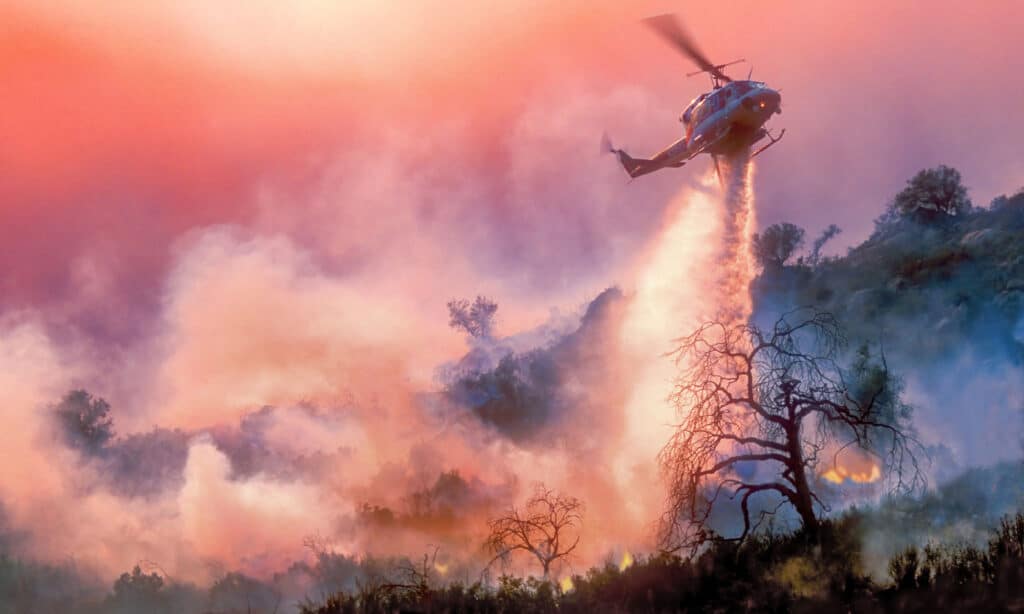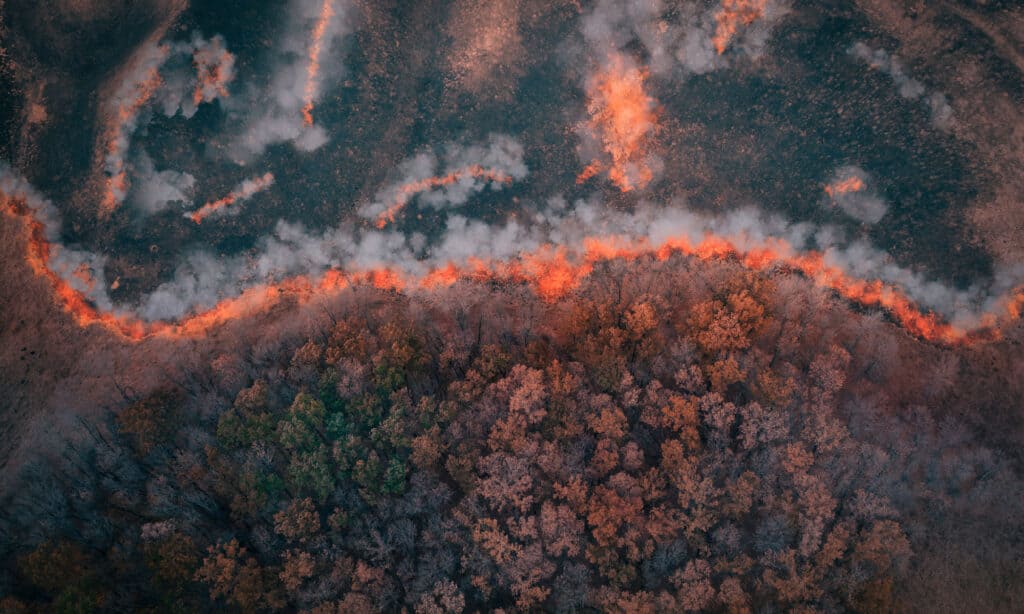Many people associate different memories with the sounds and scents of fire, which is expected, given that fire is one of our most powerful tools and one of the most dangerous forces. So, is fire an enemy or a friend? A fire in the wilderness does not have to be a villain. Wildland fires are an essential aspect of the forest ecology in many parts of the world, as they help keep the wilderness healthy and diverse. But, as the saying goes, too much could kill. Wildfires can be devastating if not put under control. But what is a wildfire, and how is it different from a forest fire?
Forest fires are caused by natural or artificial fires linked to land clearing and deforestation in tropical, temperate, and coniferous forests. On the other hand, a wildfire is a spontaneous, uncontrolled fire in a natural woodland, grassland, or prairie setting. In this article, we will explore and contrast the characteristics of wildfire and forest fire, and will provide you with the critical knowledge to prevent them from happening.
Comparing a Forest Fire and a Wildfire

| Forest Fire | Wildfire | |
|---|---|---|
| Primary Triggers | – Starts mainly because of hot or summer season | – Starts mainly because of human carelessness |
| Setting | – Occurs in different types of forests | – Occurs in a forest, grassland, brushland, or cropland |
| The time it is most likely to ensue | – Forest fires are seasonal | – Wildfires can happen anytime |
The 3 Key Differences Between a Forest Fire and a Wildfire

Wildfires can start naturally, sparked by the sun’s heat or a lightning strike.
©iStock.com/David Aughenbaugh
The main difference between forest fires and wildfires is their intensity. A forest fire is a type of wildfire that burns uncontrollably through a forest, typically more than six feet in height. The firestorm, which is an intense fire across a vast region, is the fire that spreads the fastest among forest fires. Heat increases as the fire burns, and air rushes in, causing the flames to spread. More air causes the fire to whirl like a tornado. Flames erupt from the fiery twister’s base, while burning embers erupt from the top, igniting smaller fires. Inside these storms, temperatures can reach 2,000 degrees Fahrenheit.
Drought and previous fire suppression practices have allowed higher fuel loads to collect on the ground, causing wildfires to become more intense. Wildfires have also become more lethal and destructive because of the growing number of people living in rural and wilderness areas near high-risk fire routes.
Other notable contrasts exist between these two disastrous events. Let’s figure out what they are.
Forest Fire vs Wildfire: Primary Triggers

Forest fires are a type of wildfire.
©iStock.com/bradscottphotos
To ignite a wildfire, you’ll need fuel, heat, and oxygen. The “fire triangle” is the name given to these elements. A fire requires fuel to start, which includes any combustible object such as leaves, trees, grasses, or even houses. The moisture content, size, shape, and amount of the fuel affect how easily it will burn and at what temperature. The initial ignition of fire is triggered by a heat source, whether natural or human-made. All combustible materials generate vapors that ignite when heat is applied. The third component, oxygen, aids the chemical reactions during a fire. When the fuel burns, it reacts with the oxygen in the air to produce heat and combustion.
Forest fire is the most common threat in forests. These fires have existed since the beginning of time. They endanger not just forest wealth but also the entire fauna and flora system, drastically disrupting biodiversity, ecology, and the ecosystem of a region. The forests become littered with dried senescent leaves and twinges throughout the summer when there has been no rain for months, and they could burst into flames ignited by the tiniest spark. During the previous few summers, the Himalayan forests, particularly the Garhwal Himalayas, have been burning regularly, resulting in a massive loss of vegetative cover in that region.
Wildfires can start naturally, sparked by the sun’s heat or a lightning strike. However, people are to blame for the overwhelming majority of wildfires. According to research, arson, unattended campfires, debris fires, and discarded cigarettes cause roughly 84 percent of wildfires in the United States.
Forest Fire vs Wildfire: Setting
Forest fires are caused by natural or man-made fires linked to land clearing and deforestation in tropical, temperate, and boreal forests. Due to the extreme humidity, forest fires are uncommon in tropical rainforests. Even during the dry season, the vegetation is usually too wet for lightning to strike or for accidental fires (from a smoldering campfire or cigarette) to spread.
A wildfire is an uncontrolled, unplanned fire in natural environments such as forests, grasslands, or prairie. Wildfires can occur worldwide, although they are more common in the United States and Canada’s forested areas. They are also vulnerable in many parts of the planet, including most of Australia’s vegetated areas and the Western Cape of South Africa.
Forest Fire vs Wildfire: The Time it is Most Likely to Ensue

Wildfires can happen at any time of the year.
©iStock.com/Andrii Chagovets
A large percentage of forest fires are seasonal, and they are most common during the hot season but can be avoided with proper care. Forest fires, according to some, are linked to climate change, and more fires have occurred in recent decades as a result of rising temperatures. In the twenty-first century, the number of annual fires is predicted to climb, posing a threat to the planet’s general quality of life.
Wildfires can happen at any time of the year. However, as an area experiences more dry and hot circumstances, such as drought, the risk of wildfires increases. Droughts are sometimes preceded by a period of above-average rainfall, which fosters the growth of more plants and trees. However, when drought conditions prevail, this flora frequently wilts and dry up, diminishing moisture content and providing adequate fuel for flames.
Drought conditions — and wildfires — are most common in late fall and early winter in North Carolina, but they can last into the spring. The risk of wildfires in California, on the other hand, is most significant between August and November, when hot, dry winds are most common.
Thank you for reading! Have some feedback for us? Contact the AZ Animals editorial team.








